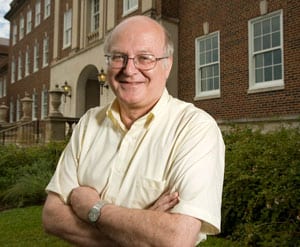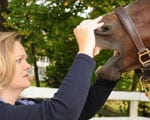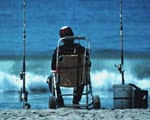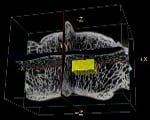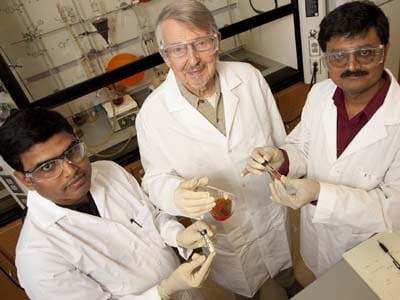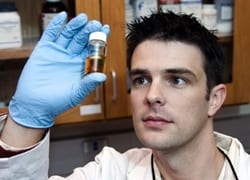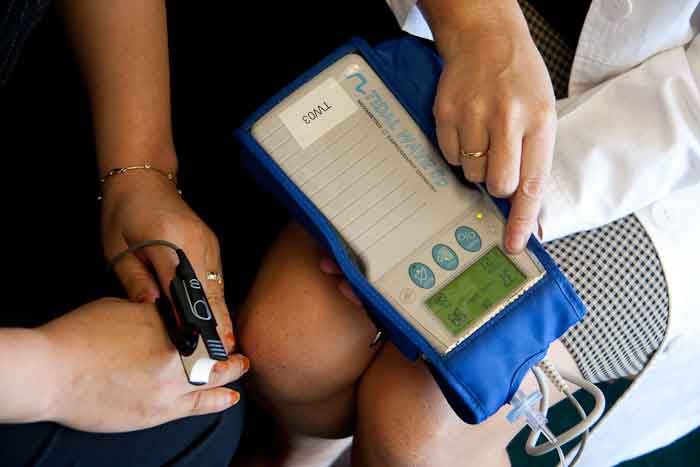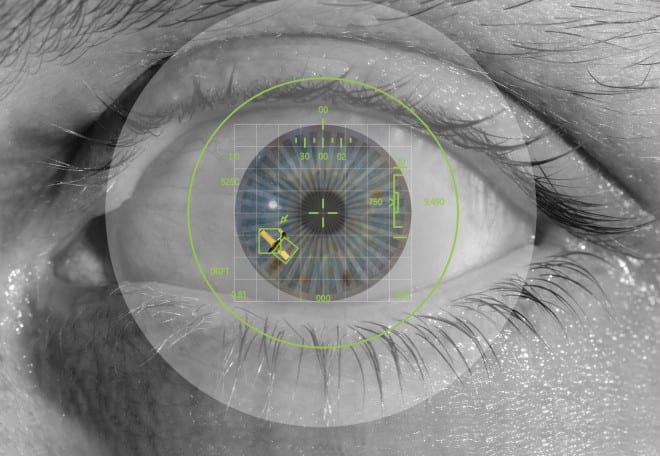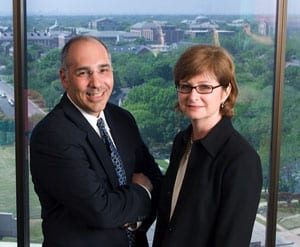Study participants in the “My Voice, My Choice” program practiced saying “no” to unwanted sexual advances in an immersive virtual environment
Teen girls were less likely to report being sexually victimized after learning to assertively resist unwanted sexual overtures and practicing resistance in a realistic virtual environment, finds a new study.
The effects persisted over a three-month period following the training, said clinical psychologist Lorelei Simpson Rowe, lead author on the pilot study from Southern Methodist University, Dallas.
The research also found that those girls who had previously experienced dating violence reported lower levels of psychological aggression and psychological distress after completing the program, relative to girls in a comparison group.
“The virtual simulations allowed girls to practice being assertive in a realistic environment. The intent of the program is for the learning opportunity to increase the likelihood that they will use the skills in real life,” said Simpson Rowe, an associate professor and graduate program co-director in the SMU Department of Psychology. “Research has shown that skills are more likely to generalize if they are practiced in a realistic environment, so we used virtual reality to increase the realism.”
The training program, called “My Voice, My Choice,” emphasizes that victims do not invite sexual violence and that they have the right to stand up for themselves because violent or coercive behavior is never OK.
“It is very promising that learning resistance skills and practicing them in virtual simulations of coercive interactions could reduce the risk for later sexual victimization,” said Simpson Rowe.
She cautioned, however, that the research is preliminary and based on a small sample: 42 in the “My Voice, My Choice” condition and 36 in a control condition. Future research is needed to establish the benefits of the program across different age groups and populations, for example, college versus high school students.
The study’s strengths included its randomized controlled design and a high participant retention rate among the 78 teen girls in the study.
The virtual-reality simulation component of “My Voice, My Choice” utilizes a software program developed by study co-authors Ernest N. Jouriles and Renee McDonald in conjunction with SMU’s Guildhall video gaming program. Jouriles and McDonald are clinical psychologists in the SMU Psychology Department. Jouriles is professor and chair. McDonald is a professor and associate dean of research and academic affairs for Dedman College of Humanities and Sciences.
“One advantage the virtual simulations offer is the ability to actually observe whether, and how, the girls are using the skills in coercive situations that feel very real,” McDonald said. “This provides girls with opportunities for immediate feedback and accelerated learning, and for facilitators to easily spot areas in need of further strengthening. The value of this advantage can’t be overstated.”
One question that remains for future research is whether the practice in virtual simulations was the operative factor that reduced sexual victimization, Simpson Rowe said.
“We need to determine if practice in a virtual setting is the key factor in making the intervention effective, or if other factors, such as being encouraged to stand up for themselves, led to the outcomes,” she said.
The researchers reported their findings, “Reducing Sexual Victimization among Adolescent Girls: A Randomized Controlled Pilot Trial of My Voice, My Choice,” in the journal Behavior Therapy. The article is published online in advance of print at http://bit.ly/1Cxwva7.
Females who firmly resist unwanted advances stand a greater chance of escaping a sexually coercive situation
The current study builds on decades of earlier related studies by a broad range of researchers.
– About 25 to 50 percent of women in the U.S. are victims of sexual violence, usually in their teens or early 20s, according to a 2006 report by the U.S. Department of Justice. While many sexual violence prevention programs have been developed, few have been rigorously evaluated and even fewer have been shown to actually reduce sexual victimization.
– Historically, risk-reduction programs teach skills to identify and escape threats, and are typically targeted at females. Usually they only have small-to-moderate effects on victimization, or don’t succeed in any reduction.
– There is significant research evidence, however, that girls and women who say “no” firmly, yell, or physically fight back have a better chance of escaping a sexually coercive situation without being raped, compared to those who freeze, cry, apologize or politely resist, which some attackers view as “token” refusals.
– Simulation training using virtual reality is used routinely and successfully to train soldiers, physicians and pilots. Extensive research has shown that skills learned under stressful or dangerous conditions similar to those occurring in real life are more likely to generalize to the real world. The real-world context, in the case of the current study, is sexual coercion or unwanted sexual advances.
Small groups met with trained facilitator, provided peer feedback
Participants were 78 female students in 9th through 12th grade from an all-girls urban high school.
The teens were randomly assigned to either the group that received the “My Voice, My Choice” training or to a wait-list control group. In total, 42 girls completed the virtual reality training, while 36 were in the control group that received no training until the end of the follow-up.
“Although young women are aware of the risk of sexual violence, they don’t always view that risk as relevant to themselves and aren’t always eager to sit through a 90-minute program,” Simpson Rowe said. The girls were thus provided gift cards to a local store for their time.
Training started with a small group of 2 to 4 young women led by a trained female facilitator. For 30 minutes the facilitator explained and modeled assertive resistance, teaching the girls how to make it clear that sexual coercion and unwanted advances are not acceptable, such as using a firm voice tone, showing confident body language, and stating their limits (e.g., “I don’t want to have sex with you, so stop asking me”).
Each small group then transitioned to practicing the skills in the virtual coercive simulations.
Variety of scenarios are simulated in a virtual bedroom
“In the small group setting, there was usually some nervous giggling or shyness at first, but the girls became really engaged when they practiced the skills in the virtual simulations,” Simpson Rowe said.
Through virtual-reality goggles connected to the computer with the simulation software, each girl viewed a male avatar seated next to her on a couch in a virtual bedroom. The avatar’s speech, facial expressions and movement were manipulated via computer by a male actor. The girls interacted with the avatar in a variety of simulations which were observed by the facilitator and other group members.
The young women then took turns practicing the “My Voice, My Choice” skills, reassured that they could stop at any time and would never actually be touched. Each participant engaged in three 2- to 3-minute simulations.
Simulations started with less intense scenarios, where the male was mildly pressuring, such as asking repeatedly for the girl’s phone number. Scenarios escalated to increasingly more severe situations, such as verbally coercing the girl to kiss him, becoming increasingly aggressive in speech, and being more persistent in the face of resistance.
Following each simulation, other group members and the facilitator provided feedback to each girl on how she could increase the effectiveness of her response. Suggestions included using a firmer tone of voice, and refusing without apologizing.
“The students really gave one another good feedback about how to improve,” Simpson Rowe said. “And once they went through the training they told us it was so valuable they’d recommend it for everyone.”
Reports of multiple episodes of sexual or physical victimization uncommon
Each month for three months afterward, the girls completed an established and well-validated 25-question survey, the Conflict in Adolescent Dating Relationships Inventory, to assess occurrence of any sexual, physical or psychological victimization. They also completed a measure of psychological distress.
Results showed 22 percent in the control group reported sexual victimization during the three-month follow-up period, compared to only 10 percent in the “My Voice, My Choice” group.
“My Voice, My Choice” did not reduce rates of physical victimization. However, among those girls who had higher rates of previous dating violence victimization, completion of “My Voice, My Choice” was associated with lower rates of psychological victimization — being yelled at or called names, having a boy try to frighten or spread rumors about her — and lower rates of psychological distress.
That finding indicates the “My Voice, My Choice” training could also reduce the risk for psychological victimization and distress among girls who have been previously victimized.
“This finding is particularly noteworthy because other violence prevention programs have generally been ineffective or less effective for previously victimized young women,” said Simpson Rowe, who also heads the Couples Research Lab at SMU.
The research was funded by the Timberlawn Psychiatric Research Foundation, Dallas. — Margaret Allen
Follow SMUResearch.com on twitter at @smuresearch.
SMU is a nationally ranked private university in Dallas founded 100 years ago. Today, SMU enrolls nearly 11,000 students who benefit from the academic opportunities and international reach of seven degree-granting schools. For more information see www.smu.edu.
SMU has an uplink facility located on campus for live TV, radio, or online interviews. To speak with an SMU expert or book an SMU guest in the studio, call SMU News & Communications at 214-768-7650.


 Fossil supervolcano in Italian Alps may answer deep mysteries around active supervolcanoes
Fossil supervolcano in Italian Alps may answer deep mysteries around active supervolcanoes SMU seismologist Brian Stump named AAAS Fellow for distinguished scientific contributions
SMU seismologist Brian Stump named AAAS Fellow for distinguished scientific contributions Study: Contraception may change how happy women are with their husbands
Study: Contraception may change how happy women are with their husbands Study funded by NIH is decoding blue light’s mysterious ability to alter body’s natural clock
Study funded by NIH is decoding blue light’s mysterious ability to alter body’s natural clock Jurassic climate of large swath of western U.S. was more complex than previously known
Jurassic climate of large swath of western U.S. was more complex than previously known Asthma patients reduce symptoms, improve lung function with shallow breaths, more CO2
Asthma patients reduce symptoms, improve lung function with shallow breaths, more CO2 Study will teach algebra with student-authored stories that draw on their own interests
Study will teach algebra with student-authored stories that draw on their own interests Hunt begins for elusive neutrino particle at one of the world’s largest, most powerful detectors
Hunt begins for elusive neutrino particle at one of the world’s largest, most powerful detectors Key to speed? Elite sprinters are unlike other athletes — deliver forceful punch to ground
Key to speed? Elite sprinters are unlike other athletes — deliver forceful punch to ground Hunt for dark matter takes physicists deep below earth’s surface, where WIMPS can’t hide
Hunt for dark matter takes physicists deep below earth’s surface, where WIMPS can’t hide Marital tension between mom and dad can harm each parent’s bond with child, study finds
Marital tension between mom and dad can harm each parent’s bond with child, study finds Booming mobile-health app market needs robust FDA oversight to ensure consumer safety, confidence
Booming mobile-health app market needs robust FDA oversight to ensure consumer safety, confidence
 Observed by Texas telescope: Light from huge explosion 12 billion years ago reaches Earth
Observed by Texas telescope: Light from huge explosion 12 billion years ago reaches Earth Low IQ students learn to read at 1st-grade level after persistent, intensive instruction
Low IQ students learn to read at 1st-grade level after persistent, intensive instruction Richest marine reptile fossil bed along Africa’s South Atlantic coast is dated at 71.5 mya
Richest marine reptile fossil bed along Africa’s South Atlantic coast is dated at 71.5 mya Satellite view of volcanoes finds the link between ground deformation and eruption
Satellite view of volcanoes finds the link between ground deformation and eruption Comet theory false; doesn’t explain cold snap at the end of the Ice Age, Clovis changes or mass animal extinction
Comet theory false; doesn’t explain cold snap at the end of the Ice Age, Clovis changes or mass animal extinction Conventional vs. modern: Repertoire drives opera house identity, market share
Conventional vs. modern: Repertoire drives opera house identity, market share